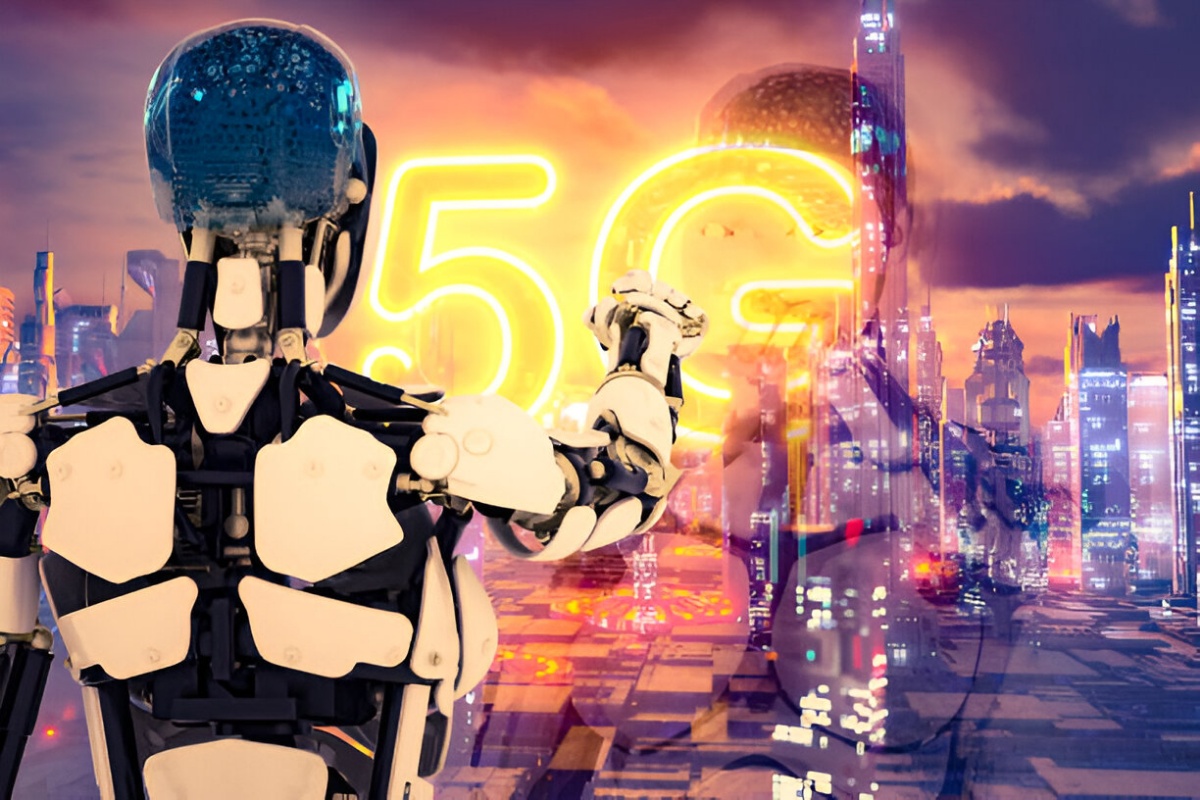Introduction
The convergence of 5G and Edge Artificial Intelligence (Edge AI) is set to redefine the technological landscape across industries. While 5G promises ultra-fast, low-latency wireless communication, Edge AI brings intelligent computing closer to where data is generated — at the “edge” of the network. Together, they form a synergistic duo that is poised to fuel the next generation of applications, from autonomous vehicles to smart cities, healthcare innovations, and industrial automation.
This blog explores the future of 5G and Edge AI, how they are transforming the digital world, the industries being impacted, key benefits, current challenges, and what lies ahead.
What Is 5G?
5G, or fifth-generation mobile network technology, is the successor to 4G LTE. It offers:
- High Speed: Up to 100 times faster than 4G.
- Low Latency: Latency as low as 1 millisecond.
- Massive Device Connectivity: Supports up to 1 million devices per square kilometer.
- Improved Bandwidth: For seamless streaming and real-time data processing.
These capabilities make 5G an enabler for applications that require real-time responsiveness and vast data throughput.
What Is Edge AI?
Edge AI refers to deploying artificial intelligence algorithms locally on hardware devices at the edge of the network — such as smartphones, IoT sensors, cameras, or industrial machines — rather than in a centralized cloud or data center.
Key characteristics of Edge AI include:
- Low Latency: Immediate data processing with minimal delay.
- Data Privacy: Sensitive data is processed locally.
- Reduced Bandwidth Usage: Less data needs to be transmitted to the cloud.
- Offline Functionality: Devices can function independently of network status.
The Synergy Between 5G and Edge AI
Individually, 5G and Edge AI are powerful. Together, they are revolutionary. Here’s why:
- Real-Time Intelligence
5G’s ultra-low latency enables Edge AI systems to process and act on data in real-time. This is crucial for applications like autonomous driving, remote surgeries, and industrial robotics. - Scalability for IoT
With 5G, millions of devices can be connected, while Edge AI ensures that only the most critical data is transmitted — optimizing network resources. - Enhanced Security
Processing data locally with Edge AI reduces exposure to cloud-based vulnerabilities, while 5G offers built-in security protocols for safe transmission. - Efficient Use of Resources
Less data sent to centralized servers means reduced bandwidth costs and energy consumption — aligning with sustainable development goals.
Real-World Applications of 5G and Edge AI
1. Autonomous Vehicles
Autonomous cars rely on real-time data processing from sensors, cameras, and GPS systems. Edge AI processes this data on-board, while 5G ensures seamless communication with other vehicles and infrastructure for safety and efficiency.
2. Smart Cities
Edge AI enables real-time traffic management, energy usage optimization, and predictive maintenance of public infrastructure. With 5G, cities can connect vast numbers of IoT devices to create efficient urban ecosystems.
3. Healthcare and Remote Surgery
With Edge AI, critical patient data can be analyzed on-site in ambulances or clinics, while 5G allows for real-time remote monitoring and even robotic surgeries guided by specialists located across the globe.
4. Industrial Automation
Factories are leveraging Edge AI for predictive maintenance, quality control, and robotic process automation. 5G enables seamless communication between machines, improving operational efficiency and safety.
5. Retail and Customer Experience
Retailers use Edge AI for real-time inventory tracking, smart checkout systems, and personalized customer interactions. 5G supports AR/VR shopping experiences that are immersive and lag-free.
Benefits Driving the Future
- Ultra-Fast Decision Making
Enables use cases where milliseconds matter — like emergency response or stock market trading. - Enhanced User Experience
Smooth, responsive applications with minimal lag and maximum interactivity. - Support for Decentralized Systems
Edge AI allows devices to make decisions independently, reducing reliance on centralized systems. - Empowering Remote Areas
5G’s reach and Edge AI’s self-sufficiency make advanced tech accessible even in low-connectivity zones.
Challenges Ahead
Despite the promise, several hurdles need to be addressed:
- Infrastructure Costs
Deploying 5G and Edge AI infrastructure at scale is capital-intensive. - Interoperability Issues
Integrating devices from multiple vendors requires universal standards. - Security Risks
While Edge AI enhances data privacy, increased endpoints also mean a larger attack surface. - Skilled Workforce
A shortage of professionals skilled in both 5G and AI is slowing down adoption.
What the Future Holds
As both 5G and Edge AI technologies mature, we can expect:
- Widespread Adoption of AI-Driven Services
From real-time language translation to smart manufacturing, AI will be ubiquitous. - Rise of “Edge-Native” Applications
Apps will be designed specifically to harness the power of local AI and fast networks. - Integration with Emerging Technologies
Combining with blockchain, AR/VR, and quantum computing will unlock new possibilities. - Policy and Regulation Evolution
Governments will need to develop regulations that balance innovation with privacy and security.
Conclusion
The future of 5G and Edge AI is one of transformation, empowerment, and acceleration. These technologies will not only reshape industries but also redefine how we live, work, and interact with the world. By bringing intelligence closer to where it’s needed and connecting everything at lightning speed, the combination of 5G and Edge AI will be the cornerstone of the next digital revolution.
As we step into this future, collaboration between tech developers, governments, and businesses will be essential to overcome challenges and ensure that the benefits of this technological convergence are widely shared.

